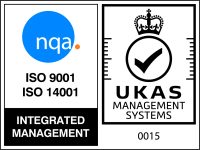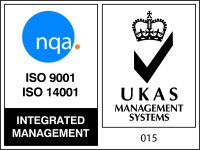Vacuums: Matching the right machine to the job
Vacuuming is key to any floorcare programme and in maintaining good indoor air quality.
However, for cleaning professionals the process of vacuuming, and especially the choice of what kind of vacuum to use and when, is worthy of careful consideration.
Consider the setting and the task
As mentioned by Applied and Environmental Microbiology, the process of vacuuming, which physically removes dirt and debris from floors, is believed to mitigate allergens in an indoor setting.
Yet, in terms of their efficacy, not all vacuums are equal and before cleaning professionals undertake this part of the cleaning process they should consider both the environment in which they are operating as well as the task at hand.
In an example cited by Cleaning Maintenance and Management, a cleaner operating in a restaurant may choose a quieter model compared to a cleaner who is working out of a school or office, where a machine with the power to tackle large floor areas may be required.
Additionally, a cleaning professional should also consider if their vacuuming task will require clearing any wet spills or high-level work.
Matching the vacuum to the job
There are four different types of vacuums: upright, tank, backpack and specialty. To achieve a professional standard, cleaning staff should always select a model that is specifically designated for commercial rather than domestic use.
CleanLink offers a helpful comprehensive overview of these four vacuum types here and here, but, broadly speaking, upright vacuums are a solid choice for large carpeted areas. Tank vacuums, which are usually wheeled, offer a good level of manoeuvrability and can be suitable for floors and carpeted areas. Wet/dry vacuums, which can tackle both dry mess and liquid, are normally included in this category.
Backpack-style vacuums are excellent for cleaning professionals seeking to efficiently cover large areas as well as for those looking to clean air vents and blinds or other ceiling fittings.
Finally, speciality vacuums, as the name suggests, are normally intended for specific jobs, such as cleaning near electronics or in an industrial setting.
Features, fixtures and settings: A matter of choice
Every machine comes with a unique array of features, fixtures and settings. In the practical sense, the job at hand may necessitate the use of certain features, but a cleaner’s personal preference may inform some aspects of their choice.
Cleaning Maintenance and Management elaborates on the topic and illustrates that personal preference plays a part in the vacuum selection process when, say, a cleaner opts for a lightweight model or a cordless machine, which is known to increase productivity.
Other features, however, ensure that a vacuum is suited to a particular task. For example, a machine with 70 A-weighted decibels or less is ideal when a quieter, more discreet clean is needed.
The motor life of a vacuum is also worth considering. Extended-life models offer long-term reliability. In environments where allergen reduction is important, cleaners may also choose a vacuum fitted with a high-efficiency particulate air or HEPA filtration system.
Pros and cons to consider
CleanLink illustrates that there are pros and cons to every vacuum. While uprights perform well on large carpeted areas and are a good choice for cleaners seeking to make a small initial financial outlay, they may contribute to long-term dust and allergen issues, as explained here.
The outlet also advises potential buyers to consider the cost of maintenance plus the risk of repetitive wrist strain associated with the use of these types of vacuums.
While tank-style vacuums manoeuvre well, as CleanLink explains, it is important to routinely check their wheels for damage, as this can impact upon a cleaner’s productivity. Cleaners should also treat these models to resist rust and ensure that the tank on their machine is composed of either stainless steel or high-quality plastic.
A cleaner working in an office or institutional setting may not have the occasion to come across a specialty vacuum, which, as the name implies, is used only during specialist cleaning situations and often requires careful maintenance of their motors and filters, but may be familiar with backpack-style machines.
These vacuums, as CleanLink states, cost considerably more than an upright model, but are excellent when it comes to increasing a cleaner’s productivity in terms of the overall area covered.
They also come fitted with a range of tools and attachments to enable cleaning professionals to tend to hard-to-reach areas. But as ISSA, the Worldwide Cleaning Industry Association, clarifies, cleaning professionals should know how to wear and use them appropriately.
Vacuuming is a major part of any cleaner’s floorcare routine. Armed with in–depth knowledge of both their machine and its suitability to addressing a particular task, a cleaner’s choice of vacuum is critical in ensuring professional standards and, by extension, good indoor air quality.








